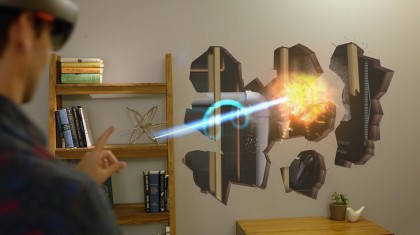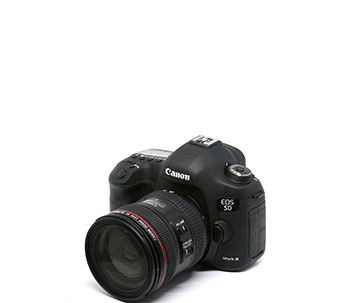Microsoft's new tool lets you view what someone wearing HoloLens sees
Get in on the holographic action

As anyone who's worn HoloLens can attest to, the holograms you see through Microsoft's augmented reality headset are pretty darn cool. The digital renderings overlain onto the real world are far from perfect, but in our experience, these ever-improving AR images add a touch of magic to the real world.
One of the issues with this enchanting view, however, is that just like every other AR and virtual reality headset, only the HoloLens wearer gets the full breadth of the experience. Microsoft has used a professional-grade camera set-up to let observers in on what HoloLens users see during company presentations, but that capability hasn't made its way to regular folks. That is, until today.
The Windows 10 maker is launching a new tool called Spectator View that provides a third-person video view of what someone wearing HoloLens sees.
Microsoft imagines three use cases where this will be particularly handy: photo capture for high-res images of holograms, live demonstrations and video capture.
- Windows 10 powers the Surface Book and the best Ultrabook
Spectator View open sources what Microsoft has used for two years now, taking an expensive professional set-up and bringing it to more people with hardware and software they can compile themselves.
Now, instead of a pricey pro-level camera and intensive settings, those who want to share holographic photos, demonstrations or video with others can do so with their own snapper, though Microsoft says you may wish to use "a quality DSLR" for photo capture.

One drawback is that you can't move the camera during live demonstrations, as Microsoft has done in its own presentation, because the holograms won't render properly. You'd need a genlock signal to match the timing of the camera and HoloLens tracker to do this, which is a monumental task, anyway.
Get daily insight, inspiration and deals in your inbox
Sign up for breaking news, reviews, opinion, top tech deals, and more.
Microsoft provides a full breakdown of how to get going with Spectator View on a dedicated developer page. While not for the everyday user, Spectator View will likely lead to a proliferation of holographic images, videos and live demos from developers and others with their hands on the $3,000 (£2,719, AU$4,369) HoloLens.
Not only will these be compelling to look at, but by literally showing more people what HoloLens can do, it could lead to more sales once a consumer version becomes available.
- The best VR headsets you can buy this year
Michelle was previously a news editor at TechRadar, leading consumer tech news and reviews. Michelle is now a Content Strategist at Facebook. A versatile, highly effective content writer and skilled editor with a keen eye for detail, Michelle is a collaborative problem solver and covered everything from smartwatches and microprocessors to VR and self-driving cars.
